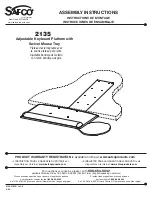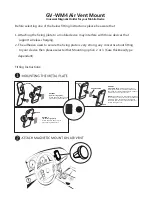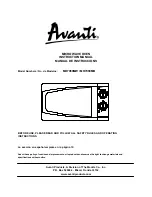
Select an appropriate mounting location as described
above. Drive two mounting screws through the
mounting holes in the mounting bracket. Use
fasteners appropriate for the mounting surface
(wood, tile, masonry, etc.).
Be sure to test the reception of the signal from the sensor, in this location, to the receiver
using this procedure.
1. Push and hold the Transmitter button for at least four (4) seconds (but not more than
10 seconds).
2. The Sensor Transmitter will send a signal with lower than normal power.
3. If the Receiver detects the signal, the Red LED will begin flashing for a duration of 2.5
minutes. This allows a single installer time to return to the Receiver to verify the signal
was received. If the LED is flashing, the selected Transmitter location is within range.
2. Operation
Set Rainfall Setting
The rainfall setting determines the amount of rainfall needed to prevent your irrigation
system from watering. You can adjust the rainfall setting from
1
⁄
8
" to
3
⁄
4
" (5mm to 20mm).
The ideal rainfall setting for your location depends on soil type, humidity, amount of direct
sunlight the sensor receives and frequency and amount of rainfall. The table below gives
some guidelines to help determine the appropriate rainfall setting. (See table)
Note: At the
1
⁄
8
" or 5mm setting , a very light rainfall will activate the sensor and suspend
watering. The
1
⁄
8
" or 5mm rainfall setting is not recommended in areas with high humidity.
To set the rainfall setting, turn the sensor dial cap until the desired rainfall setting lines up
with the arrow on the sensor body, as shown in
Illustration 10.
5
WRS Wireless Rain Sensor
10
Irrigation site conditions
Rainfall setting
• Dry climate/low humidity
1
⁄
8
" to
1
⁄
4
"
(5mm to 10mm).
• Infrequent, light rains
• Sensor receives long periods
of direct sunlight
• Clay-type soils
• Moist climate/high humidity
1
⁄
2
" to
3
⁄
4
"
(15mm to 20mm).
• Frequent, heavy rains
• Sensor mounted in a mostly
shady area
• Sandy soils
Sensor Transmitter Mounting and
Low Power Test
This procedure allows a single installer to mount
and test the Sensor Transmitter and Receiver for
communication.
See Illustration 9.
The Low Power Test helps to ensure that the
Wireless Sensor will continue to operate even
under conditions of radio interference or
weakening batteries.
9
7
Connect the extension bracket to the standard
bracket arm and transmitter using the
screws provided.
8
Mounting bracket with the extended
mounting arm.
Mounting with Extended Bracket
5
Rain Gutter Mounting
Connect the clip to the inside of the rain gutter
and tighten the wingnut.
6
An alternative mounting
arrangement for the rain gutter clip is
shown here. This requires that the clip is
moved to the other hole on the bracket arm.
Sensor Transmitter Mounting and Low Power Test
The Wireless Rain Sensor provides a flexible-mounting bracket and gutter clip for the
Sensor Transmitter. It can be used to mount onto a rain gutter or directly to a wall or post.
An extension arm is also provided to assist in moving the sensor out beyond any
obstructions. The rain gutter clip and the extension arm can be easily installed in the field
with the provided wing nut connectors. Figures 5-8 detail the rain gutter mounting
procedure and the various possible mounting configurations that are available.
WRS Wireless Rain Sensor
6

























